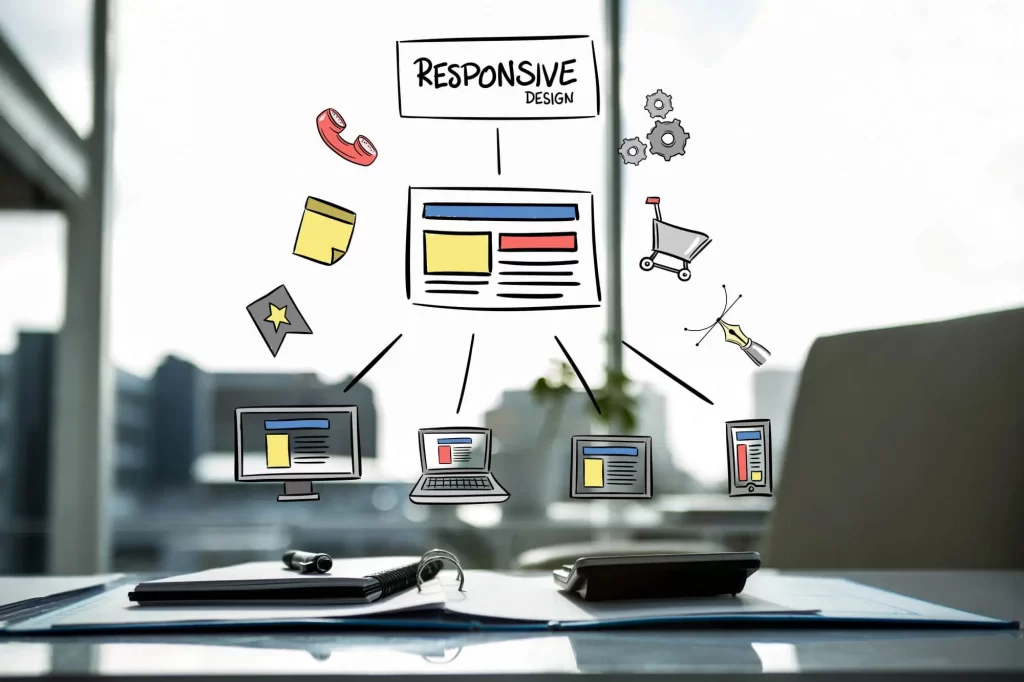psd to responsive html
Our Happy Clients







PSD to Responsive HTML DEVELOPMENT AGENCY

ENHANCE YOUR PSD to Responsive HTML WEBSITE

Mobile Optimization
Speed and Performance
User-Centric Features
See more conversions into leads and customers
Are you ready to see your revenue skyrocket?
PSD to Responsive HTML Development Service
PSD Conversion Expertise
PSD-to-Responsive-HTML services specialize in converting static Photoshop designs into pixel-perfect HTML/CSS code, ensuring that your web design is faithfully translated into a functional website.
Cross-Browser Compatibility
PSD-to-Responsive-HTML experts ensure that your website functions consistently across different web browsers, guaranteeing a uniform experience for all visitors.
Responsive Web Development
These services focus on creating websites that are fully responsive, adapting seamlessly to various screen sizes and devices to provide an optimal user experience.
Quality Assurance and Testing
Quality assurance processes are in place to test and validate the HTML code, ensuring that your website is error-free, performs well, and meets industry standards for web development.
PSD to Responsive HTML DEVELOPMENT PROCESS
Analysis and Evaluation
The process begins with a thorough analysis of the provided PSD design files. The development team evaluates the design's complexity, elements, and responsiveness requirements.
PSD Slicing
Design elements are sliced and converted into HTML and CSS code. This step involves breaking down the PSD into smaller components, making them ready for web development.
HTML/CSS Coding
The PSD components are translated into HTML and CSS code, ensuring pixel-perfect accuracy and adherence to responsive design principles for various screen sizes.
Responsive Implementation
The HTML and CSS code are structured to make the website responsive. Media queries, flexible grids, and fluid layouts are applied to ensure compatibility with different devices.
Cross-Browser Testing
The developed website undergoes rigorous cross-browser testing to ensure it functions consistently across various web browsers, including Chrome, Firefox, Safari, and Internet Explorer.
Performance Optimization
To enhance website speed and performance, the code is optimized, including image compression, code minification, and leveraging browser caching techniques.
User Testing
User testing is conducted to identify and fix any usability issues or bugs. This phase ensures a seamless and user-friendly experience.
Final Review and Deployment
After thorough testing and client approval, the final website is reviewed, and upon confirmation, it is deployed to the live server, making it accessible to the public.

Analysis And Evaluation
The process begins with a thorough analysis of the provided PSD design files. The development team evaluates the design's complexity, elements, and responsiveness requirements.

PSD Slicing
Design elements are sliced and converted into HTML and CSS code. This step involves breaking down the PSD into smaller components, making them ready for web development.

HTML/CSS Coding
The PSD components are translated into HTML and CSS code, ensuring pixel-perfect accuracy and adherence to responsive design principles for various screen sizes.

Responsive Implementation
The HTML and CSS code are structured to make the website responsive. Media queries, flexible grids, and fluid layouts are applied to ensure compatibility with different devices.

Cross-Browser Testing
The developed website undergoes rigorous cross-browser testing to ensure it functions consistently across various web browsers, including Chrome, Firefox, Safari, and Internet Explorer.

Performance Optimization
To enhance website speed and performance, the code is optimized, including image compression, code minification, and leveraging browser caching techniques.

User Testing
User testing is conducted to identify and fix any usability issues or bugs. This phase ensures a seamless and user-friendly experience.

Validate
We meticulously validate code during PSD to Responsive HTML conversion, ensuring adherence to web standards for optimal performance and quality.

Final Review And Deployment
After thorough testing and client approval, the final website is reviewed, and upon confirmation, it is deployed to the live server, making it accessible to the public.
WHY SHOULD YOU make website into PSD to Responsive HTML?
Mobile Accessibility
Ensure your website is accessible on all devices, providing an optimal user experience for smartphone and tablet users.
Improved SEO Rankings
Responsive websites tend to rank higher in search engine results, enhancing your online visibility and attracting more organic traffic.
Enhanced User Experience
A responsive design ensures that visitors have a seamless and user-friendly experience, leading to increased engagement and lower bounce rates.
Future-Proofing
By adopting a responsive design, you future-proof your website, ensuring it remains compatible with new and evolving devices and screen sizes.
Frequently Ask Questions






